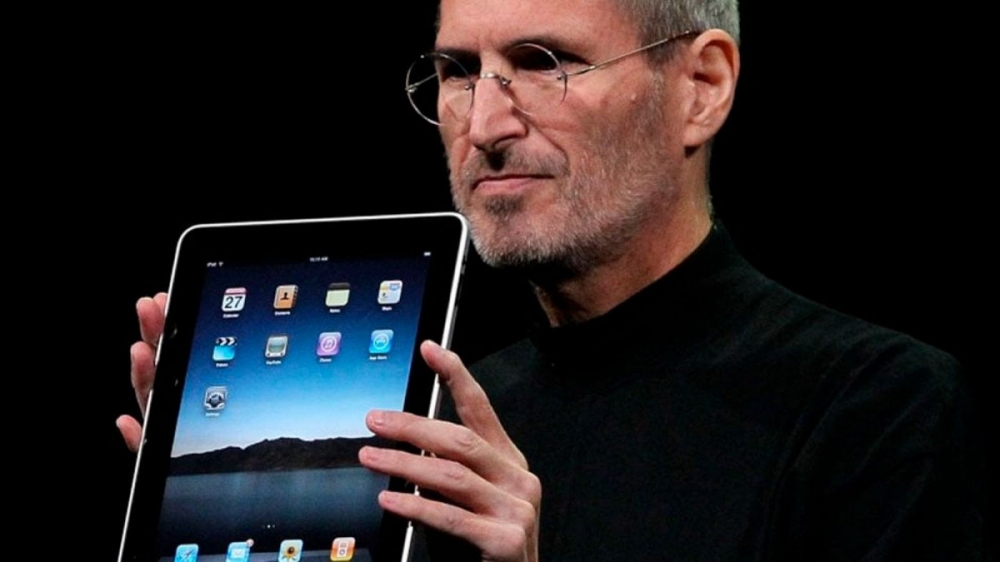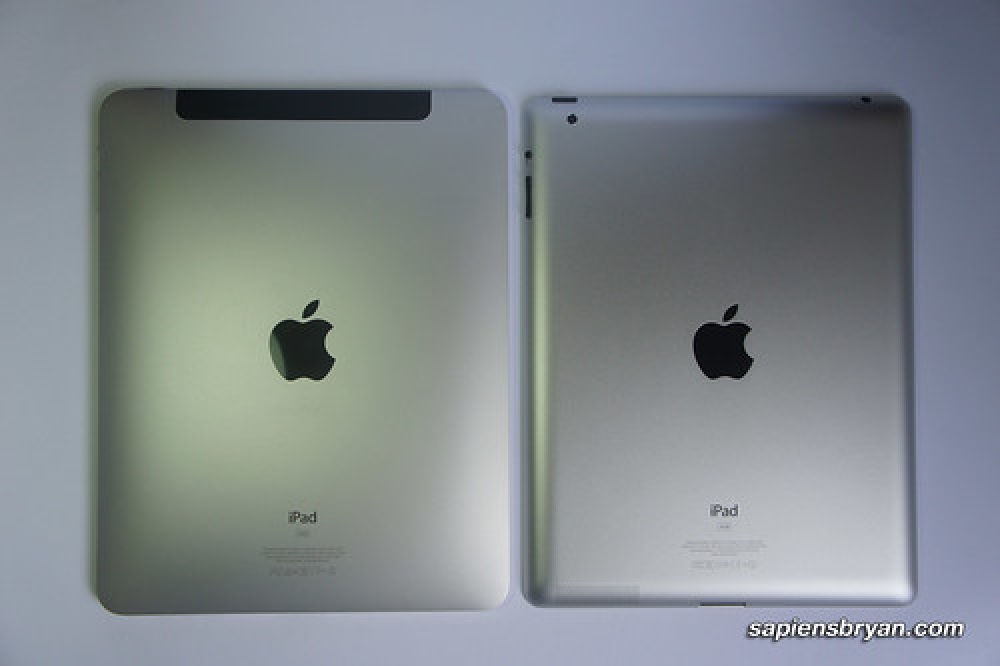10 Surprising Facts About the Apple iPad
- Apple’s first iPad prototype had handles—yes, like a dinner tray.
- At the time, netbooks were all the rage—that is, until the iPad came along.
- Steve Jobs initially hated the idea of a tablet, and famously, he especially hated the trend of using a stylus.
- Read on to discover all 10 fascinating facts about the iPad that will leave you amazed.
The Apple iPad, first introduced in 2010, stands as one of the most transformative gadgets of recent memory. Initially dismissed as an oversized iPhone, the iPad has evolved into a versatile device that really has changed how we consume media, engage in work, and interact with technology in general. While most people know the basics—its sleek design, the Retina display, and the fact that it runs on iPadOS—there’s a wealth of lesser-known details that even the most die-hard Apple fans might find surprising.
These surprising facts offer a deeper dive into the iPad's history and development, shedding light on the quirks and decisions that have shaped it into the powerhouse it is today.
 Photo via Apple Inc. // Steve Jobs holding the original iPad in 2010.
Photo via Apple Inc. // Steve Jobs holding the original iPad in 2010.
1. iPads Were Apple’s Answer to Netbooks
In the late 2000s, netbooks—a category of small, cheap laptops—were all the rage. They were intended for light computing tasks like web browsing and word processing, but Apple wasn’t interested in following that trend. Instead of entering the netbook market, Apple decided to create something entirely different—a lightweight, portable tablet that would offer a better user experience. This decision led to the birth of the iPad, a device that quickly outshone the short-lived netbook craze.
2. The Original iPad Was Almost a TV Dinner Tray
The first iPad could have looked very different. During its development, Apple’s design team toyed with several prototypes, including one with handles and a built-in kickstand. The idea was to make the iPad easier to carry and use on flat surfaces, similar to a TV dinner tray. Ultimately, these features were scrapped, but the concept of a kickstand later re-emerged in the form of the iPad’s magnetic Smart Cover.
 Photo via The Verge // One of the iPad prototypes that was leaked due to a court filing. "Court filings have revealed multiple iPhone and iPad design prototypes, including a 16:9 iPad concept and several models featuring kickstands." — The Verge
Photo via The Verge // One of the iPad prototypes that was leaked due to a court filing. "Court filings have revealed multiple iPhone and iPad design prototypes, including a 16:9 iPad concept and several models featuring kickstands." — The Verge
3. Steve Jobs Didn’t Like Tablets—At First
In 2003, when asked about the possibility of Apple making a tablet, Steve Jobs was famously dismissive. He told tech journalist Walt Mossberg, “We have no plans to make a tablet. It turns out people want keyboards. Tablets appeal to rich guys with plenty of other PCs and devices already.” Despite his initial reluctance, Jobs eventually changed his mind, and by 2010, he was on stage introducing the world to the iPad.
We have no plans to make a tablet. It turns out people want keyboards. Tablets appeal to rich guys with plenty of other PCs and devices already.— Steve Jobs
4. The iPad’s Record-Breaking Launch
While the iPhone might be Apple’s flagship product today, the iPad had an even more successful launch. Apple sold 300,000 units on the first day alone and hit the 1 million mark in just under a month—half the time it took for the original iPhone to reach the same milestone. By the end of its debut year, nearly 15 million iPads had been sold, cementing its place in tech history.
5. Jailbroken in a Day
The original iPad’s security didn’t last long against hackers. Within just 24 hours of its release, a Twitter user named MuscleNerd posted evidence that they had successfully jailbroken the device. This was a significant achievement at the time, demonstrating both the skill of the hacking community and the limitations of Apple’s security measures.
6. The Short-Lived iPad 3
The iPad 3 holds the dubious honor of having the shortest lifespan of any iPad model. Launched in March 2012, it was replaced just seven months later by the iPad 4, which introduced the Lightning connector. This quick turnover left many iPad 3 owners feeling frustrated and, in some cases, outright betrayed by Apple’s rapid product cycle.
7. No Cameras on the First iPad
Today, iPads come with high-quality cameras that can rival some standalone digital cameras, but the original iPad had no camera at all. It wasn’t until the release of the iPad 2 in 2011 that Apple added both front and rear-facing cameras, responding to consumer demand for video chatting and photo capabilities.
 Photo via Latest Hi Tech News // The iPad 1 (left) next to the iPad 2 (right)
Photo via Latest Hi Tech News // The iPad 1 (left) next to the iPad 2 (right)
8. The iPad Air’s Big Moment
The holiday quarter of 2013 was a record-breaking period for the iPad, thanks to the introduction of the iPad Air. During this three-month stretch, Apple sold over 26 million iPads, a figure that has yet to be surpassed. The iPad Air’s combination of powerful performance and a slim, lightweight design made it a massive hit among consumers.
9. Ricky Gervais and the iPad
Ricky Gervais, the creator and star of "The Office," was one of the first celebrities to get his hands on an iPad, thanks to a gift from Apple’s design chief, Jony Ive. This sparked a humorous exchange on Gervais’s XFM radio show, where he, Stephen Merchant, and Karl Pilkington discussed the device. Despite the gift, Gervais didn’t hold back his criticisms of Apple during his Golden Globes hosting gigs, famously calling out the company’s use of “sweatshops” in China.
10. Steve Jobs’ Kids Didn’t Use the iPad
In an interview with tech journalist Nick Bilton, Steve Jobs revealed that his children had never used the iPad. “We limit how much technology our kids use at home,” Jobs said, surprising many who assumed that the Apple co-founder’s home would be filled with the latest gadgets. Walter Isaacson, Jobs’ biographer, confirmed that family dinners at the Jobs household were tech-free, with discussions focused on books and history rather than screens.
The iPad’s Legacy
The iPad’s journey is one from being initially dismissed by Steve Jobs to becoming a household name that has stood the test of time. Over the years, the iPad has evolved from a simple tablet into a versatile tool used in countless industries, from education to healthcare. Steve Jobs always said that he wanted the iPad to be a "magical sheet of glass" and that's exactly what it is—a huge screen that is whatever you want it to be in the moment.
While Google and others tried to compete with the iPad since its inception, 14 years later, the iPad stands strong as the #1 in the industry by a wide margin.
A Cultural Phenomenon
The iPad has become a staple in classrooms, replacing textbooks and transforming how students learn. It’s a go-to device for artists and designers, offering a portable digital canvas that really has changed the creative process drastically. And for many, it’s a preferred device for entertainment, offering everything from gaming to streaming in a sleek, portable package. For me personally, I use it constantly for work, entertainment, and to keep my kids entertained. It's an all-in-one device.
Looking Forward
The iPad has changed a lot over the years. At Apple Scoop, we're constantly looking forward and reporting back to you with only the most reliable Apple news and rumors — including about the Apple iPad.
Recommended by the editors:
Thank you for visiting Apple Scoop! As a dedicated independent news organization, we strive to deliver the latest updates and in-depth journalism on everything Apple. Have insights or thoughts to share? Drop a comment below—our team actively engages with and responds to our community. Return to the home page.Published to Apple Scoop on 24th August, 2024.
when was this published
2 months agoNo password required
A confirmation request will be delivered to the email address you provide. Once confirmed, your comment will be published. It's as simple as two clicks.
Your email address will not be published publicly. Additionally, we will not send you marketing emails unless you opt-in.